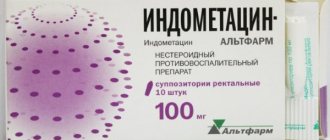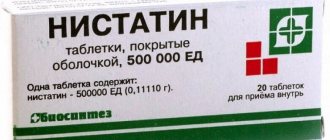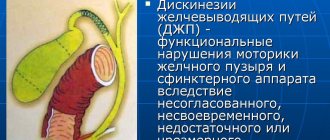Diazepam is a narcotic drug based on the active ingredient of the same name. A tranquilizer is used in the treatment of:
- Neuroses
- Borderline disorders with accompanying manifestations of anxiety, increased tension, fear
- Insomnia
- Motor activity of various origins
- Alcohol addiction withdrawal symptoms
- Spastic phenomena due to damage to the spinal cord or brain
- Epistatus.
In addition, the indication for the use of Diazepam is to prepare the patient for surgery (for relaxation); in obstetrics it is used to facilitate childbirth and prevent early placental abruption.
Composition and dosage forms of release
The most common pharmaceutical forms of the tranquilizer are tablets, coated or uncoated, and liquid for injection. Also in the arsenal of specialists there are dragees and tablets for children. Diazepam capsules are not available.
Pills
- Active substance: 5 or 10 mg diazepam
- Auxiliary ingredients (composition varies among different manufacturers): lactose, starch, gelatin, E 572.
Drugs in the form of white/yellowish/whitish pills in the shape of a flat cylinder with a bevel. The tablets are packaged in blister packs of 10 pieces. In a cardboard pack - 2 blisters, annotation.
Diazepam in the form of solution for injection
- Active ingredient: 5 or 10 mg diazepam
- Auxiliary composition: varies among different manufacturers.
The drug is in the form of a translucent or slightly opalescent solution. It can be uncolored or with a subtle tint. Packaged in ampoules of 2 ml, placed in special trays. The pack contains 1 or 2 trays with ampoules, instructions for use.
Diazepam rectal
Medicines in the form of suppositories are produced in dosages of 5 and 10 mg of the active substance. Additional ingredients are represented by components that provide the structure of the drug and the rapid penetration of diazepam into the rectum. The drug is packaged in blisters of 5 pieces. In a cardboard package - 1 or 2 plates along with a description and instructions. In the Russian Federation, Diazepam in the form of suppositories for rectal use has been removed from registration.
Medicinal properties
The drug belongs to the group of tranquilizer drugs. The active substance is a benzodiazepine derivative – diazepam. The substance has the ability to have axiolytic, sedative, and anticonvulsant effects. In addition, drugs based on it also have a muscle relaxant effect.
The mechanism of action of diazepam is achieved through its ability to inhibit GABA activity in the central nervous system.
After penetration into the body, the substance is absorbed at a high speed, peak concentration in plasma is formed after an hour and a half. Diazepam is highly active: it penetrates into all internal fluids: it passes through the placental barrier, is excreted into breast milk, and penetrates the spinal cord.
Metabolic transformations occur in the liver, and the substance is excreted from the body by the kidneys.
Diazepam
Active substance:
Diazepam*
Pharmgroup:
Anxiolytics
Analogs for the active substance:Apaurin Valium Roche Diazepabene Diazepam Nycomed Diazepam-ratiopharm Diazepex Diapam Relanium Relium Seduxen Sibazon | Application area:Abdominal surgery Alcohol withdrawal syndrome Withdrawal syndrome Withdrawal syndrome in alcoholism Abstinence Alcohol withdrawal Adenomectomy Agitation Alcoholism Alcohol withdrawal Alcohol addiction Alcohol withdrawal state Alcohol withdrawal syndrome Balloon coronary angioplasty Anxiety Vaginal hysterectomy Corona bypass Explosive excitability Interventions on the vagina and cervix Bladder interventions Intervention in the oral cavity Internal excitement Excitability Excitation Excitement is acute Psychomotor agitation Impact of stress factors Impact of extreme situations Restorative and reconstructive operations Hand hygiene of medical personnel Gynecological surgery Gynecological interventions Gynecological surgeries Hyperexcitability Hypovolemic shock during surgery Motor excitement Disinfection of purulent wounds Disinfection of wound edges Delirious state in alcoholism and drug addiction Diagnostic interventions Diagnostic procedures Diathermocoagulation of the cervix Dipsomania Prolonged emotional stress Long surgical operations Alcohol addiction Replacing fistula catheters Binge drinking Drunken state Alcohol abuse Ideation disorder in alcoholism Infection during orthopedic surgery Artificial heart valve Quarterly binge Cystectomy Short-term outpatient surgery Short-term operations Short-term surgical procedures Cricothyroidotomy Blood loss during surgery Bleeding during surgery and in the postoperative period Culdocentesis Relief of psychomotor agitation Relief of anxiety Laser coagulation Laser coagulation Laser coagulation of the retina Laparoscopy Laparoscopy in gynecology CSF fistula Minor gynecological operations Minor surgical interventions Mastectomy and subsequent plastic surgery Mediastinotomy Microsurgical operations on the ear Mucogingival surgeries Obsessive craving for alcohol Stitching Impaired muscle tone Minor surgeries Neurosis Neurological diseases Neurotic disorders Neurotic symptoms in alcoholism Neurotic state Neurosurgical operation Non-psychotic anxiety disorders Neuropsychic stress Nervous excitement Restlessness Night restlessness Immobilization of the eyeball in ophthalmic surgery Orchiectomy Complications after tooth extraction Acute stage of schizophrenia with agitation Acute mental agitation Pancreatectomy Paroxysm of excitement Pathological craving for alcohol Overexcitement Pericardectomy Rehabilitation period after surgery The period of convalescence after surgical interventions Percutaneous transluminal coronary angioplasty Pleural thoracentesis Pneumonia postoperative and post-traumatic Increased excitability Increased nervous excitability Increased emotional and cardiac excitability Increased arousal |
Mode of application
Diazepam should be used in treatment in accordance with the instructions for use and the prescribed form of the drug. The dosage and duration of therapy are determined in accordance with the clinical picture and characteristics of the patient’s condition.
Treatment begins with the lowest dose of Diazepam, at which the therapeutic effect of the drug is manifested. After analyzing the body’s response, the amount of medication is gradually increased. After completing the course, drug withdrawal is carried out by gradually reducing the dose so as not to provoke withdrawal syndrome.
In acute conditions, injections are used; after the condition has stabilized, the administration of the solution is canceled, and the patient is transferred to oral forms of the drug.
Pills
The duration of the course should be as short as possible according to the diagnosis and individual characteristics of the patient.
- Increased anxiety, restlessness: the average amount is 5 mg of diazepam, the maximum allowed per day is 30 mg (in several doses).
- Insomnia due to anxiety: 5 to 15 mg half an hour before bedtime.
- Muscle spasticity: for spasms – 5-15 mg (5 mg for one dose), taken 1-3 times a day.
- When eliminating spasms of central origin - 5-60 mg.
- Premedication: 5-20 mg.
Injections
Injections must be administered very slowly to avoid dysfunction of the heart and respiratory system. The medicine is administered intramuscularly or intravenously. During the procedure, it is necessary to have another health care worker present so that, if necessary, it is possible to immediately provide specialized assistance.
- Elimination of an acute psychomotor state: first 5-10 mg IV, if necessary, repeat the injection after 3-4 hours.
- Tetanus: first 10 mg IV or deep IM, then 100 mg IV, after dissolving the medicine in Diazepam ampoules in 500 ml of sodium chloride solution or in a glucose solution.
- Epistatus: 10-20 mg, a second injection can be administered after a 3-4 hour break.
- Premedication before surgery: 0.5-2 hours before surgery, 10 mg IM.
Suppositories
For epilepsy and severe seizures of epilepsy: CH – from 0.15 to 0.5 mg, the highest dosage – 20 mg. Drugs for children are calculated based on the ratio of 0.2-0.5 mg per 1 kg of body weight, for elderly patients - from 0.2 to 0.3 mg per 1 kg of body weight. The drug is administered rectally.
During pregnancy and breastfeeding
Drugs containing diazepam are prohibited for use during pregnancy, since the substance has been found to have a teratogenic effect and can cause developmental pathologies in the fetus. The first three months of pregnancy are especially dangerous in this regard. Prescribing Diazepam is possible only in cases of extreme necessity (threat to the mother, premature placental abruption or premature birth). For such indications, the decision on the need for drugs is made on an individual basis, and therapy is carried out under the supervision of doctors.
The consequence of the use of medications with diazepam by pregnant women is a significant disturbance in the fetal heart rate, temporary muscle hypotension, decreased body temperature, respiratory pathologies, and in newborn children it often manifests itself as withdrawal syndrome. Newborns should be under medical supervision from the first minutes of life to relieve side effects and withdrawal symptoms.
Combining therapy with diazepam and breastfeeding is contraindicated, since the substance passes freely into human milk and can provoke unwanted reactions in the baby. Therefore, if it is not possible to replace Diazepam with other drugs, lactation should be interrupted for the period of the treatment course.
Contraindications and precautions
Medications containing diazepam are prohibited from being used in therapy if the patient has one of the contraindications:
- High threshold of sensitivity to the contained components or any other benzodiazepine derivative
- Severe respiratory dysfunction, COPD
- Complex forms of renal and/or liver failure
- Myasthenia gravis in severe form
- Suicidal tendencies
- Alcohol/medication/drug addiction (including history)
- Acute form of alcohol/drug poisoning, accompanied by dysfunction of vital organs
- Hypercapnia
- Acute form of angle-closure glaucoma
- Porphyrin disease
- Spinocerebellar ataxia
- Comatose, shock state
- Pregnancy (1, 3 tr.), GW
- Age up to 6 months. (for oral drugs), up to 1 month (for injections).
Can be used with caution when:
- Mild to moderate renal and/or liver failure
- Epilepsy and epistatus (including history)
- Abuse of psychoactive drugs
- Organic GM diseases
- Sleep apnea
- Age after 65 years
- Hyperkinesis.
Drug interactions
During therapy, it should be taken into account that diazepam is highly active and can change or weaken the effects of other drugs:
- When combined with medications with a depressant effect on the central nervous system (hypnotics, psychotropic drugs, opioid painkillers, anesthetics, antipsychotics, etc.), it enhances their suppressive effect and also affects the GM center responsible for the breathing process, causing a strong decrease in blood pressure.
- The combined use of diazepam with TCAs can provoke an increase in the effect of the latter drugs, increase the level of antidepressants and, accordingly, their effect.
- It is impossible to predict the body's reaction when using diazepam simultaneously with centrally acting antihypertensive drugs, β-blockers, anticoagulants, and cardiac glycosides.
- Diazepam enhances the effect of muscle relaxants, thereby causing apnea.
- The effect of diazepam is enhanced by oral contraceptive drugs, increasing the risk of breakthrough bleeding.
- The elimination of diazepam from the body is accelerated when taken together with drugs that induce liver enzymes.
- Sedative and anxiolytic effects are weakened when combining an antipsychotic with drugs and drinks containing caffeine.
- It is extremely undesirable to combine the drug with Clozapine (it provokes severe hypotension, loss of consciousness, and respiratory failure). Diazepam reduces the anticonvulsant effect of Levodopa; when combined with lithium drugs, it can provoke coma.
- When taken together with paracetamol, the removal of diazepam from the body is inhibited, which can lead to intoxication and overdose, and when combined with Risperidone, the threat of NMS increases.
- Combination with Rifampicin accelerates the elimination of diazepam, as the antibiotic enhances its metabolism. When combined with Phenytoin, the opposite reaction occurs: the anxiolytic inhibits the metabolic processes of the antiepileptic drug, thereby enhancing its effect.
- The intensity and duration of the tranquilizer effect increases when combined with Cimetidine and Disulfiram.
special instructions
Particular care should be taken in patients with respiratory and heart failure, organic brain lesions (it is recommended to avoid parenteral administration), myasthenia gravis, closed-angle glaucoma and a predisposition to it, as well as those who have been receiving anticoagulants for a long time, beta-blockers, centrally acting antihypertensive drugs, cardiac glycosides (mainly at the beginning of therapy).
When discontinuing treatment, the dose should be reduced gradually. In case of sudden withdrawal of Diazepam after prolonged use, the following may occur: agitation, anxiety, convulsions, tremors.
If during treatment the development of paradoxical reactions is observed, such as anxiety, acute agitation, hallucinations, sleep disturbances, then Diazepam should be discontinued.
After intramuscular injections, an increase in the activity of the enzyme creatine phosphokinase (CPK) in the blood plasma is possible; this should be taken into account when carrying out the differential diagnosis of myocardial infarction.
Intra-arterial administration of the solution should be avoided.
Drinking alcohol during treatment is unacceptable.
Due to the ability of a tranquilizer to cause a decrease in the speed of psychomotor reactions, patients who engage in potentially hazardous activities should exercise special caution.
Side effects and overdose
As with any drug, tranquilizer therapy may be accompanied by side effects. Diazepam instructions indicate the main undesirable symptoms that may occur during the treatment cycle:
- NS: drowsiness, muscle rigidity, dizziness; in some patients - confusion, depression, decreased visual acuity, double vision, dysfunction of the speech apparatus, headaches, tremor, ataxia. Quite rarely possible - nervous excitement, increased anxiety, sleep disturbance, insomnia, hallucinations. After IV injections, hiccups occur. After a long course of therapy - drug dependence, amnesia, memory impairment.
- Digestive organs: difficult bowel movements, dry mucous tissues in the mouth, excessive salivation, activation of transaminases, jaundice.
- Endocrine system: libido disturbance.
- Urinary system: enuresis.
- CV system: rarely after injections – decrease in blood pressure.
- Respiratory organs: after injections – respiratory distress.
- Allergic reactions: sometimes - rash.
It is extremely undesirable to combine Diazepam and alcohol, since the drug enhances the inhibitory effect of ethyl alcohol on the central nervous system (mainly on the respiratory section) and contributes to the development of pathological intoxication.
Oversaturation of the body with inappropriately high doses of diazepam causes pathological phenomena caused by suppression of central nervous system functions (depending on the dose, drowsiness to coma may occur). The drug Diazepam causes:
- Lethargy
- Extreme drowsiness
- General weakness
- Partial or complete loss of coordination of voluntary muscle movements
- Suppression of reflexes
- Muscle hypotonia
- Prolonged confusion
- To whom
- Respiratory failure
- Hypotension.
If the patient is conscious and has no signs of his disorder, then the patient is prescribed lavage, stimulation of vomiting, and activated charcoal is prescribed. In case of fainting, rinsing is done through a probe, symptomatic treatment and support for the functions of vital organs are prescribed, and diuretics are administered intravenously. In case of breathing problems, mechanical ventilation is performed.
In case of nervous excitement, the use of barbiturates is prohibited, and the administration of a drug antagonist is possible only in stationary conditions. Hemodialysis is practically not used because it is ineffective.
How to get rid of addiction
Abrupt cessation of diazepam administration provokes a withdrawal syndrome with dangerous manifestations for the patient and those around him. These are depression, perception disorders, vomiting, and epileptic seizures in the case of replacement therapy. Traditional medicinal methods for tranquilizer addiction are ineffective. In contrast, the Narconon program aims to:
- non-drug detoxification with a parallel return of the patient to awareness of himself and his responsibility;
- return to a healthy life and communication, gaining a clear point of view on life;
- liberation from the psychological influence of the drug without the risk of breakdowns and relapses;
- developing creative problem solving skills.
For non-drug weaning, assistive practitioners are used, and the toxic effect of the drug on the body is eliminated with the help of running, sauna, diet with complexes of oils, minerals, vitamins and niacin. During the program, patients regain awareness of responsibility for their actions and are freed from the past. The therapeutic effect lasts for life.
Share:
Baclofen (baclosan) is a pharmaceutical drug
Phenazepam
Analogs
Synonyms of Diazepam: Apaurin, Valium, Diazepabene, Seduxen, Relium, Sibazon, etc.
Reladorm
Tarchomin Pharmaceutical Works Polfa. (Poland)
Tranquilizer based on diazepam and cyclobarbital. It is used to treat sleep disorders (insomnia, inability to sleep, frequent awakenings), and eliminate irritability.
The dosage is selected individually for each patient after analyzing the body’s response to the drug. If used to improve sleep, it is recommended to drink 1⁄2-1 tablet. an hour before going to bed.
Pros:
- Calms
- Helps you sleep
- Strong action.
Minuses:
- Side effects.
Reviews about the drug
Patient reviews of the use of Diazepam are mostly positive. Doctors also have a fairly high opinion of this medication.
Patients
Valeria, 32 years old (Ufa): “Before the operation, the doctor prescribed me Diazepam for premedication. I was very worried about this medicine. The doctor said that this is a fairly effective antipsychotic. I didn’t deceive you: thanks to the administration of Diazepam, I absolutely calmly endured the intervention under local anesthesia.”
Yaroslav, 40 years old (Ilyichevsk): “My nephew was diagnosed with epilepsy a year ago. The attacks began to recur more frequently, so the doctor prescribed a diazepam-based enema. The medicine helps very quickly, the effect lasts for several hours.”





